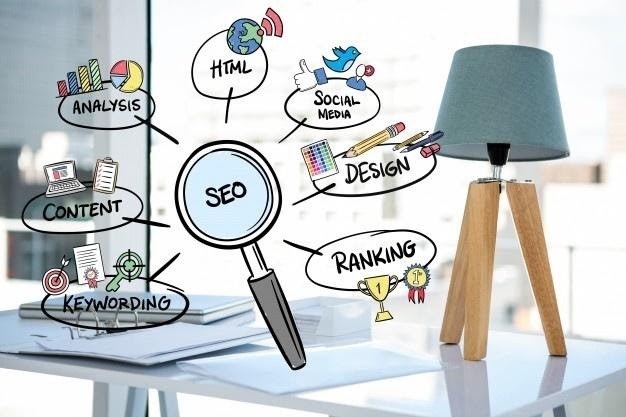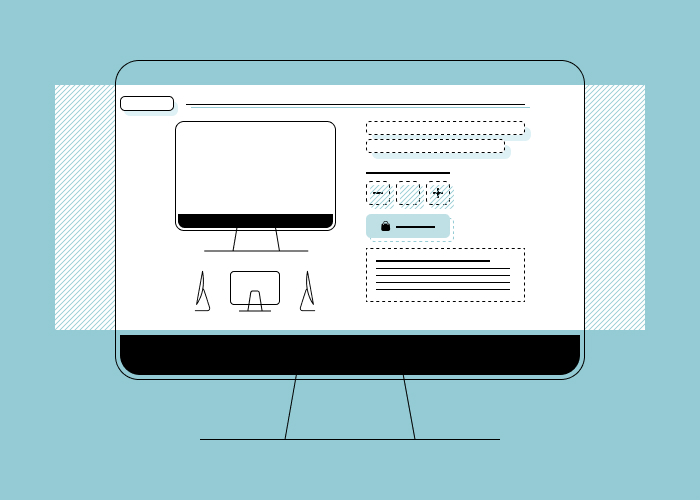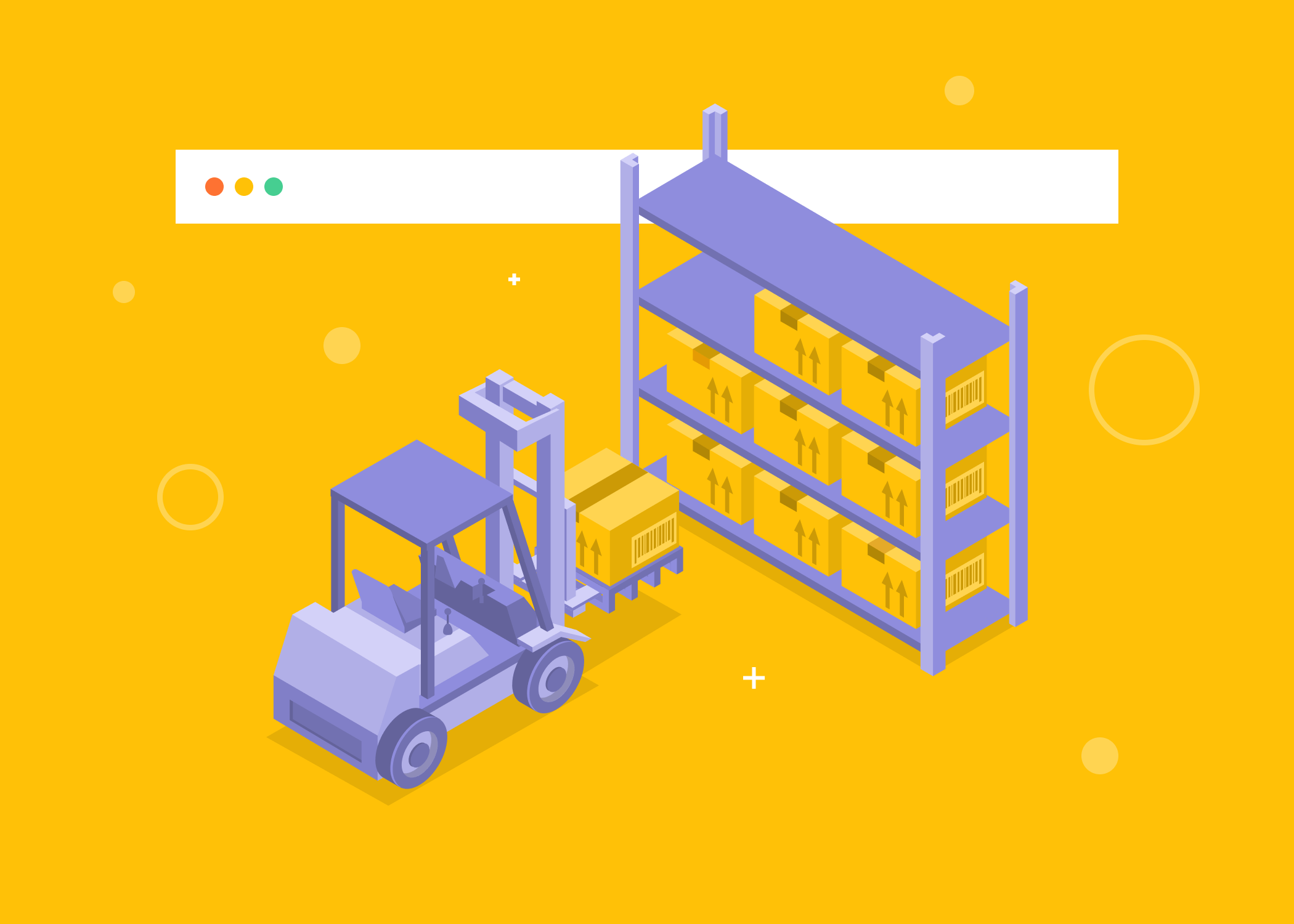
The success of a retail business (or any business, for that matter) is an aggregate consisting of numerous summands. Business owners need to pay attention to finding a unique product with its own niche in the market, hiring a team of professionals, advertising their brand, providing prompt delivery and obliging service, monitoring financial documents, and doing dozens of other things necessary for a company to flourish.
Modern times have added to this list of must-haves. Today, as a company having big-time aspirations, you should keep abreast of the latest marketing trends and build an e-commerce website for small businesses, becoming a part of the e-commerce industry.
E-commerce: From a Nascent Marvel to a Mainstream Tendency
In this millennium, you don’t need to leave your lodgings to have all the amenities and comforts of contemporary civilization delivered to your front door. All you have to do is make a couple of clicks on your laptop and enjoy your long-coveted things. E-commerce has manifested a prodigious annual upsurge of 23% in the recent decade.
If you employ your smartphone to do the same, you become a party to m-commerce – a variety of e-commerce whose rate of expansion is twice as great. Typically used to buy something o, resulting, e- and m-commerce cover a whole gamut of transactions. Thus, you can book football or railway tickets, reserve a hotel room, pay for public utilities, and even take part in an auction through e-commerce platforms.
Also read: How to Build an Auction Website
Given the astounding opportunities e-commerce has in store, it is quite natural that any company – be it an international corporation or a small retail business – can’t ignore the advantages this marketing technique can bring.
Benefits of E-commerce
We offer you several reasons why you need to make a retail website for your company.
- Unlimited availability. Your site is accessible 24/7, which is convenient both for customers who can visit it at any time and for you as a business owner, whose selling vistas broaden drastically.
- Global reach. Having decided to build a retail website, you will get the whole world as a market. Moreover, people from any corner of the world discover products they need not only from retail websites but via search engines as well, since Google indexes them so that they are shown in search results.

Image Source:searchengineland.com
- Comfortable shopping experience. The current hectic lifestyle leaves practically no time for a trip to the store. And if we remember traffic jams, searching for a parking space, selecting the item you need, and finally queuing to the cash register, the growing preference for online shopping becomes only too clear. Visiting a website is free from these inconveniences, pandering to both the busiest and the laziest consumers.
- Targeted marketing. Having a wealth of customer data at your disposal, you can leverage retail website best practices to keep track of the latest trends in your market niche and stay tuned to the changes in your consumers’ tastes. After all, what else can give you a chance to know and address thousands of your clients by their first name?
If you think that having an online shop is quite enough for quick success in sales, you are mistaken. Modern retail websites are to contain certain features that will facilitate your business and boost your revenues.
Small Business Retail Website Guidelines
There is no universal recipe for how to create a retail website that would suit all types of businesses, since each industry has its own peculiarities. However, expert retail website developers claim that an efficient-working web page should inevitably include:
- Foolproof checkout procedure. Simplicity reigns supreme in website design. Shoppers should easily find the merchandise they need and make a purchase smoothly. To ensure this, your site must have such components as shopping categories, filters, and a Compare Products option. Other recommended features that are instrumental in clients’ decision-making are FAQs, Shipping and Return Policy, as well as Customer Reviews.
- Related items lists. Planning to buy something from you, consumers are likely to acquire some related products if you keep reminding them that you have those.
- Multiple payment gateways. This is what you should take care of when choosing among retail website platforms. Available payment gateways may differ from country to country.
High loading speed. A survey conducted among major online retailers states that an increase in loading speed between 2 and 8 seconds translates into a three-fourths boost of conversion rates. Conversely, slow loading time causes half of the online shoppers to abandon the page.

Now you know the things of primary importance in the process of website creation. Let’s see how you should go about it.
How to Start Your Own Retail Website
The comprehensive algorithm of creating a retail website includes several steps.
Step 1. Conduct Preliminary Research
This step is performed offline to make sure it is worthwhile setting up a business. To determine it, you should come up with the product you want to sell and explore the respective niche. Modern internet facilities and tools, such as Google Trends, TrendHunter, Amazon bestseller list, and Ubersuggest will allow you to figure out trending products and discover the current bestsellers. Moreover, you should make sure the items you will sell are light and easy to ship.
However, if you already own a business, you have definitely gone through this stage, so you may skip it and move on to the next phase.
Step 2. List the Necessary Prerequisites
IT-wise, to create your own retail website you will need a domain, a hosting provider, a payment processor, and a web building platform. Among physical items, the must-have is packaging to ship the product to the client. And the last, but, in fact, the foremost is the initial capital. Here we will focus on the IT considerations.
Step 3. Decide on the Domain Name
It is an important move, since this is the URL your clients will be informed about and social media will promote. It consists of the domain name proper and the TLD – a kind of postfix that follows the name after the dot-like .com or .net.
While the choice of the latter is typically limited by a few conventional options (although nonorthodox ones have become a kind of swank recently) the former gives you a free hand to ply your imagination. Ideally, it should be resounding and descriptive.
Even if you already have the name of your dream in mind, don’t get too excited over it yet. You must make sure no one with a similar mindset has already claimed it. Domain.com will help you to do it. Once you have verified the domain name availability, it’s time to purchase it via a company that registers domain names on your behalf. The most popular domain registrars are GoDaddy, Wix, and Web.com.
Step 4. Select a Web Host
Being a small business owner, you just can't afford to host your own website, so you will have to choose a server where all your data will be accessible to the public at all times. Depending on your budget, you can either opt for a shared web host where your site will have other sites as its next-door neighbors or employ the services of dedicated hosting. The latter is pricier, but you can stop worrying about other sites stealing your speed. Whatever choice you make, don't forget to inquire about the host server location and its reliability.
Step 5. Choose a Proper E-commerce Platform
This is an important decision, so there are many factors to consider before choosing a platform (see below). Since today there are a huge number of platforms, we will describe the two platforms we recommend to our customers:
- Magento is considered one of the best B2B e-commerce platforms. It provides many features and customization options for your business, while ensuring security and reliability.
- Shopware provides you with cutting-edge, highly adaptable e-commerce solutions trusted by the world's most renowned brands. Create memorable customer experiences, innovate quickly, and accelerate your growth in the ever-evolving digital commerce space.
We’ll describe them in detail below in this article, so keep reading.
Step 6. Publish Your Website After Testing It
Even if the website is complete, don't rush to publish it. First, make sure it functions properly on all principal browsers with all links working and all images shown in the right format. It is likely to take some time, but once you have done it you won't have to react to visitors' complaints and mend them on short notice.
Step 7. Make Sure Your Website is Present in Social Media and Search Engines
In the age of Twitter, Facebook, and Instagram, the shortest way to reach out to your audience is through social media outlets. And do not ignore search engines either, since it is them who will eventually channel your prospective clients to your web page.
How to Choose the Best Retail Website Platform
To make an e-commerce website for a small business, you need a platform also referred to as Content Management System (CMS). This software tool is used for building and editing content with subsequent publishing on the web. Thus, it consists of two elements. Content Management Application (CMA) is responsible for providing an intuitive user interface employed for building and modifying the content of a page, while Content Delivery Application (CDA) is a web publishing tool.
Today, there are a plethora of platforms available on the internet as installable applications. They can be either free or paid, some of them provide bonus add-ons and templates. How can you choose the one that will suit you to a tee without getting lost among numerous options?
The rule of thumb for starting the selection is to compile a list of requirements, stipulating the features you would like to see implemented on your website. Then you should find out what the available platforms have to offer. To spare you the long hours of reading, let’s compare the most popular CMSs.
Magento vs Shopware: A Head-to-Head Comparison
Both of these tools are open-source scalable platforms that are among the top CMSs in the market. Shopware has a longer history and most of its users hail from Germany. It is B2C oriented and is perfect for small and medium businesses working in fashion, art, or lifestyles industries. Magento is a comparatively novel solution extremely popular in the USA in the B2B sphere, which became one of the leaders among platforms leveraged by large businesses.

Image Source:eltrino.com
Let’s compare the basic parameters of both tools.
- User-friendliness. Shopware is simpler to use. It is compatible with any browser and features an intuitive administrative interface. With its drag-and-drop and double-click functions and parallel multiple-window opening, it is easy to operate, and you can constantly maintain a clear overview of all the data you are working with. Magento is a bit more challenging for a layman to learn, however its 2.x version has gone a significant way towards the simplification and streamlining of usage.
- SEO optimization and marketing software. With its out-of-the-box SEO settings, Magento reigns supreme in SEO-friendliness. However, its advanced tools require some effort to master, while in Shopware, SEO optimization is configured by default. The Storytelling feature available in Shopware allows website visitors to see detailed information about the product by clicking on its image, thus increasing customer engagement and brand loyalty.
- Business spheres for employment. As similartech.com claims, the most popular areas where Magento is employed are shopping, business and industry, and entertainment. Among its users are such big-time giants as Nike, Coca-Cola, and Burger King. Shopware is excellent for use in marketing, advertising, and consumer electronics. They cooperate with Philips, Lufthansa, and L'Oreal, to name a few clients.
- Used technology. Magento’s impressive software list includes some top names in the field. Default support of Nginx, extensive use of Apache, PHP, MySQL, and its stunning Elasticsearch engine excellent for handling long catalogs make it the current leader among e-commerce platforms. Shopware is not much behind and can also boast some fortes. Among such strong suits are PHP 7.2.17 facilitating coding routine and an open-source API, which Magento lacks. This feature enables customization and an easy connection to any third-party solution.
- Community and support. In this category, Magento definitely has an edge. More than 150,000 active users can provide advice and offer help whenever you need it. Access to user guides and documentation of all kinds is also important for any rookie developer. Shopware has a forum and WIKI, but unfortunately, they are in German only. Both platforms have support services, but this option is paid.
Read our full review: Magento 2 vs Shopware 6
As you see, each platform has its own attractions. However, if neither appeals to you or you want to have the best of both, you can consider custom development as a viable option.
Pros and Cons of Custom Retail Website Building
As a small business owner, you may find standard CMSs dissatisfactory on some points. Perhaps you want some advanced features not offered by conventional platforms, or you have in mind an interface design that can’t be achieved through using them. You may also have security concerns that are at odds with the standard CMSs’ policies. If that is the case with you, opt for custom website development. Yet, before ultimately deciding on it, you should be aware of potential pitfalls you may encounter.
If your time is limited, custom development won’t suit you. Preset templates used in a standard CMS make project development much faster which results in lower retail website costs. But in other aspects, custom website development has a considerable advantage.
- Higher ROI and conversion. When a site is designed with a specific audience in mind and particular objectives to accomplish, it earns a higher ROI, which increases conversions and sales.
- Better SEO positioning. Building a custom website from scratch, developers take into consideration search engine preferences and design it correspondingly.

Image Source:freepik.com
- Better user experience. Anticipating users’ expectations, custom website creators can impart it with all the visual appeal your imagination will come up with. They can make sure it is easy to use and efficient.
- Cleaner coding and improved performance. Standard platforms tend to install lots of redundant coding that can ultimately impair the smooth performance of the site. Custom developers see to it that only the clean code (that is foolproof in understanding and changing) is utilized, which drastically enhances the performance.
- Unlimited scalability and extensions. Tailored to your specific needs, custom websites are extremely scalable with none of the restrictions standard CMSs have. Consequently, you can introduce improvements or use third-party libraries and plugins not limited by security measures standard platforms maintain.
- Greater security. Since custom site developers use unique code, it is more hacker-resistant than the standard CMS. Moreover, you can always provide additional security levels to fully protect your data.
Custom development is more expensive than acquiring a standard CMS. However, if you want to receive a top-notch website fine-tuned to all your requirements and even whims, it is wise to address a team of experts who within a reasonable time will deliver a customized product at an affordable price. After all, a cheapskate pays twice, and in the case of site development, it is only too true.
How Much Does an E-commerce Website For a Small Business Cost
Building an e-commerce website involves many factors. The table below provides an example breakdown of costs for e-commerce websites, from design to development and maintenance. To get a more detailed explanation of these costs of building and maintaining an e-commerce website and to calculate the cost of your own website please contact us.
|
Team member
|
Activity
|
Average cost, $
|
|
Business analyst
|
SRS for the project
|
360-680
|
|
DevOps
|
Hosting
|
40-80
|
|
Server setup and tuning
|
300-400
|
|
Service (Cloud Flare, SSL, etc.) setup
|
300-350
|
|
Set up automation deployment
|
120-200
|
|
Go live
|
120-180
|
|
Designer
|
Solution 1: Ready theme from the market
|
360-400
|
|
Solution 2: Custom theme
|
2200-2600
|
|
Solution 3: Custom theme + responsive
|
3000-3400
|
|
Techlead
|
Code review
|
200-300
|
|
Database architecture design
|
1200-1400
|
|
Project deployment
|
40
|
|
API documentation (if needed)
|
180-240
|
|
Go live (support)
|
60
|
|
Developer
|
Set up Magento/Shopware environment
|
240-260
|
|
Set up configuration from box
|
300-360
|
|
Install and configure additional extensions
|
180-240
|
|
Update theme based on design (if needed)
|
600-800
|
|
Develop custom functionality (if any)
|
1200-1600
|
|
Content pages creation
|
120-180
|
|
Quality assurance
|
Proper project testing
|
800-1000
|
|
Additional services
|
Project management
|
700-1000
|
Read more in our blog Bookselling 101: How to Create a Successful Online Book Store.
Conclusion
With the contemporary world rapidly going digital, it is hard to imagine a successful company (even a small one) without its own website. Developing a high-quality customized web page is never a bargain price deal, but by hiring a professional developer you can be sure to get a product that will give your business a prodigious boost.
Dinarys has significant experience in developing e-commerce websites for various small businesses. If you have doubts, questions, or need advice, contact us at any time, and we’ll get back to you with the optimal solution.








